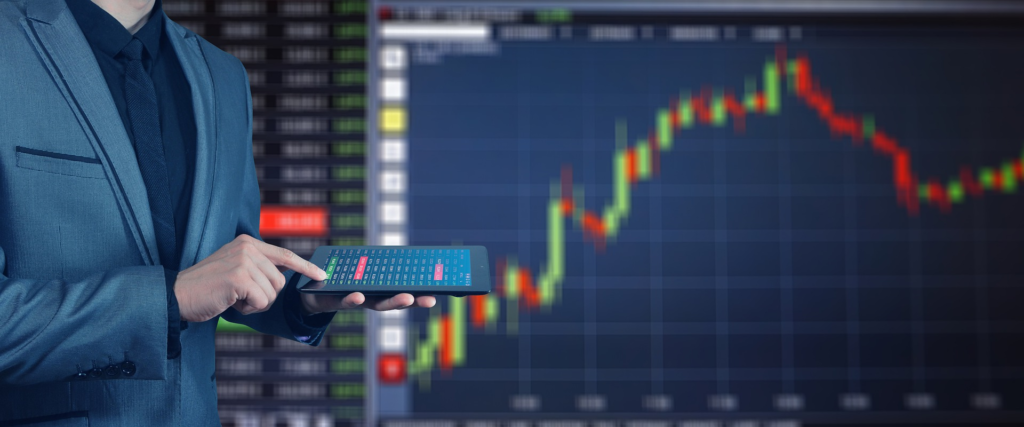Definition of business cycle: The pattern of expansion and contraction in the economy which repeats roughly every 7 – 10 years.
What is the business cycle?
The business cycle is an economic phenomenon which sees economies grow and then stagnate in a repeating cycle.
The causes for business cycles are varied, but you can think of the cycle as like long-term seasonality for an economy.
The ebb and flow of an economy cannot be totally controlled. However, strong trends, world events and government intervention can all impact the length of the business cycle and the severity of the dips.

The phases of a business cycle are as follows:
Phase 1: Optimism
- Businesses obtain finance and make long term plans for expansion
- Consumer confidence rises, along with household spending
- Activity in the economy rises
- Unemployment falls as businesses begin to hire new workers
- The stock market generally rises
This is known as economic recovery.
Phase 2: Exuberance
- Businesses borrow at higher and riskier levels to pursuit less attractive opportunities (after all the first-grade opportunities have been exhausted). This debt includes junk bonds.
- Consumer confidence is so higher that they use unsecured loans to finance their consumption
- House prices rise
- Activity in the economy continues to rise, although it begins to overheat:
- Unemployment hits recent lows, wages rise as employers compete to recruit talented employees.
- Inflation rises, as a result, eroding the value of savings but rewarding borrowers
- The stock market hits new highs, attracting in further waves of investment from retail investors
This is a booming economy.
Phase 3: Confidence wanes
- The central bank increases interest rates to dampen appetite for borrowing.
- Businesses begin to suffer losses on poorer investments and cancel future investment plans to preserve cash
- Banks restrict their lending
- Economic activity stagnates
- Consumers are overstretched and cannot increase their spending further
- Property prices stagnate
- The stock market suffers high volatility and is prone to crashing as expectations of future growth are revised downwards and corporate losses are announced.
Phase 4: Recession
- Seeing tougher times ahead, consumers cut down on spending and begin to save more instead, reducing business revenues.
- Banks recall loans from struggling businesses following an increase in defaults, this triggers bankruptcies and job losses.
- Unemployment rises, and wages fall in real terms as job candidates are more desperate to secure any job/
- Due to lower wages and lower spending, inflation falls to and approaches 0%.
- The stock market continues to be sensitive to economic Key Performance Indicators (KPIs) such as economic growth statistics, interest rates and unemployment rates.
- The central bank reduces interest rates to enable more economic activity in the hope that this will lessen the impact of the recession.
- Businesses become leaner by cutting overheads and focus on their divisions with the highest gross margins to increase their profit.
- The quality of earnings of businesses tends to reduce as they begin incurring one-off costs to close down business units and lay-off staff.
How is the phrase business cycle used in a sentence?
“In the UK, the latest business cycle ran from 2011 to 2020.“
“If a business model relies upon aspirational consumers being willing to make large purchases, it should not be brought to market during a recession.”
What else you should know about business cycles
Business cycles of different countries can be co-ordinated or relatively independent.
Australia is an excellent example. Due to massive private investment in the mining of commodities at the end of the 2010 decade, Australia did not enter recession in the ‘Great Recession‘ which affected almost every other country in the world.
Mining was such a large sector to Australia’s economy, that its boom years helped to support the wider economy and maintain employment levels while other countries such as the UK and the US were in deep recession territory.
Business cycles are usually co-ordinated because once business confidence is lost in one geography, this has an impact on the surrounding economies which host companies which trade extensively with the struggling territory.
Also, recessions are heavily driven by the confidence of consumers to spend money, and they’re much less likely to do so when they can observe a nearby economy teetering on the edge of recession.
For this reason, recessions can be largely self-fulfilling. If a population thinks that a recession is about to occur, then their collective actions will effectively seal the fate of that recession.
How does the definition of the business cycle relate to investing?
The business cycle is closely connected to the financial cycle. The financial cycle is the rise of stock markets (known as a bull market) and the fall of stock markets (known as a bear market).
Prices respond quickly to new information in financial markets, whereas a recession is more like a car crash occurring in slow motion. This is why the financial cycle is usually observed to be one step ahead of the broader business cycle.
As any property investment book will tell you, the business cycle is hugely important if you’re considering investing in property or investing in land. This is because house prices rely upon the availability of cheap debt in the form of mortgages.
When a recession strikes, banks retract their generous mortgage offers and buyers suddenly have a lot less finance at their disposal to bid for houses. House prices can fall or be difficult to sell as a result.